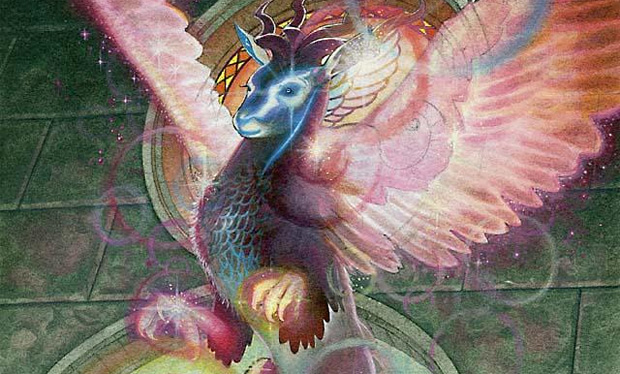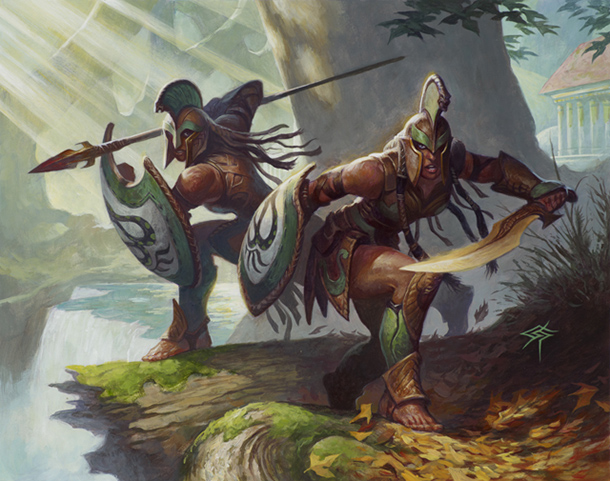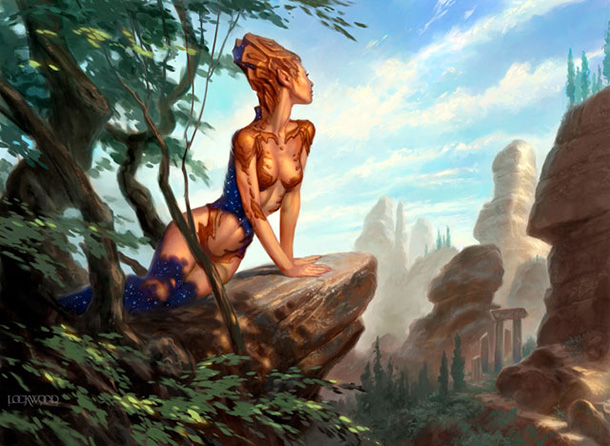By: Jason Alt
“In order to manage risk we must first understand risk. How do you spot risk? How do you avoid risk and what makes it so risky? To understand risk, we must first define risk.”
– Seinfeld Episode 140 “The Fatigues”
Did anyone see that episode? The whole point of the story arc was that George had to read a book about risk for work but he hated the voice inside his own head so he got a book on tape to make it less boring. The guy reading the book on tape sounded just like him because the Seinfeld universe is really wacky. I think that was the episode where that Jurassic Park guy said “Hello, Jerry.” It was a great show.
If it were me, I wouldn’t need another person’s voice to distract me from boredom to read a book about risk. Risk isn’t boring. At all. Risk is the least boring thing ever. Not risk is boring. “Not risk” is investing 4% of your paycheck into a company approved 401K investment plan because your company matches you dollar for dollar. Risk is e-mailing a picture of your buttcrack to everyone on the company’s e-mail distribution list, telling your boss you want to get a new job as a racecar driver and taking your life’s savings to Vegas to bet it all on black. Russian Roulette is risky. Skydiving is risky. Not wearing a condom is risky. What could be more exciting?
The Risks We Take

I’m not a millionaire. Shocking, right? I don’t have all of the money there is on the planet. Despite experiencing a high degree of success both in picking the correct specs and lucking into some opportunities in the community, I’m not the richest person on earth. That’s because 100% of my specs are not fruitful. (Edit-100% of readers are not able to figure out that I am not saying 100% of my specs are wrong, but that fewer than 100% of my specs are fruitful. It’s a confusing wording, I’ll grant you that.) Sometimes I bet on the wrong horsey. Sometimes the winds shift, the metagame changes, new cards are printed or a card gets banned and a pick that made sense last week is suddenly a poor bet this week. Sometimes you make the right call but you misjudged demand and you end up like Travis Allen did this year. Speculation is hard. You can nail a spec like Travis did and still not make a ton of money on it. You know how often a card quadruples in value? Not often. You know how often a card quadruples in value and someone from the finance community is far enough ahead of it to take advantage of scooping copies? Less often. Much, much less often. We’re not psychics, we’re just keen observers of patterns, holding on by our fingernails, hoping there wasn’t an important variable we missed. If you “hit” on a spec, you feel amazing. And you should – you accomplished something rare and wonderful.
Why We Should Go Deep
I hate myself in the worst way possible, so I spend time in the finance subreddit. Wait, I didn’t think that through at all. Someone’s probably going to link this article there and people are going to read it and be all “say WHAT?” Should have planned that better. Anyway, YOLO.
YOLO? Really Jason?
Yeah, it’s annoying when people say “YOLO” isn’t it? It was supposed to be the next generation’s “Carpe Diem” but it’s turned into a phrase that more often means “Oh, did I make a terrible decision? Oh well, no sense crying over spilled milk. Or, you know, learning.” I don’t see a lot of people saying the literal phrase “YOLO” on reddit. Not that literal phrase. However, I do see that same sentiment reflected and it was the impetus for today’s article.
Travis’ piece about his spec only going up $0.75 was a cautionary tale about a scenario where a spec can “hit” but there are no buyers at the higher price because there was no demand. His piece wasn’t written as a response to the same sentiment I’m responding to, but it does address it. I’m referring to a mentality I see applied to low-risk specs.
Hypothetical Scenario
I see a lot of people say something like “I think Prognostic Sphinx is a good spec. It was everywhere at the Pro Tour so I bought a playset.” A discussion starts. Inevitably someone will point out that the Pro Tour was block so Sphinx probably shined because there was a smaller card pool. Someone else might point out that block is a decent predictor of future standard, but not always because Khans of Tarkir could give us something to invalidate the card completely, similar to the way that Dungeon Geists really fell off after that block Pro Tour despite a very impressive showing by the geist deck from players like Jon Finkel.
“But Prognostic Sphinx was only a quarter. If it goes up, I profit, if it doesn’t, oh well. I only bought a playset. I won’t lose anything.”
Sure but if you only bought a playset, you don’t gain anything if it goes up, either.
“YOLO”
Stop Saying “YOLO”
I speak very highly of low risk specs all the time. The closer to “bulk” you buy in, the lower your risk is. Bulk rares spike up all the time due to changing circumstances. Ryan Bushard, famously, made money off of Death’s Shadow spiking up from a dime to a few dollars not once, but twice. If Death’s Shadow hadn’t done anything, he could have held onto it for as long as he wanted. There is a cost to that- the opportunity cost of having your money tied up in a busted spec. Then, if he wanted to get out, he could sell them as bulk rares. Presuming he got in for a dime, he could get out for a dime with his only breakage being shipping and processing costs. Worse things have happened. With such low downside it made sense for him to buy a playset, right?
WRONG.
If he’d bought a playset and the spec ended up busted, he’d be out a small amount of money, so why not risk it? If the spec had hit, he’s be in… a small amount of money. Practically nothing. Let’s play with made up numbers.
4 copies at $0.12 = $0.48
Shipping = $2.39
In cost – $2.87
After sitting on the cards for a week or so, the spec pays off! Either Sam Black wins a Pro Tour with 4 copies of Death’s Shadow in his deck, or Travis Woo says something that rhymes with Death’s Shadow on his stream. Either way, the card is going to be worth $5 by Monday!
You hope on TCG Player but it’s jammed with people trying to sell their copies for $4.35 and it’s ticking down. Still, Star City upped their buylist price to $1 each! Wow! That’s 10 times what you paid! Cash in, you lucky so-and-so.
Buylist order
4 copies at $1 = $4
– 3% Paypal fee = $3.84
– $2.39 shipping the cards to SCG = $1.45
$1.45 – $2.87 = -$1.42
Congratulations. You correctly predicted a price spike of 5,000% – a jump that only occurs once every year or so. Your reward for having the foresight to see a 5,000% increase coming is you profited negative $1.42. Time to call your boss and tell him to suck it- beers are on you tonight!
Think about it. If you had bought 40 copies instead, what are we looking at?
Your cost is $7.19 instead of $2.87. Not much difference.
Your profit after shipping to the buylist and paying your initial cost is $29.22. That’s still not worth the effort, and we’re buying in ten times the “YOLO” order.
Buy 100 copies and your initial cost is $14.39 (exactly twice what 40 copies costs-thanks shipping!) and you make $100 on the buylist, lose $3 to fees, $2.39 to shipping and actually profit $80. $80 is not a bad payday, but you’re paying yourself minimum wage, probably.
I like these low-risk “penny stock” picks like Death’s Shadow, but what people need to realize is that if you’re not going DEEP on the spec, you’re not making money. 100 copies is not deep unless you have a better out for the copies than the buylist. Can you sell 100 copies on TCG Player while competing with everyone else trying to capitalize on the price spike? eBay?
Like Tahiti, “locally” is a magical place
How about “locally?” This is another thing you’ll read a lot. “I’m not going to sell to a buylist, I’ll just sell these locally and not pay any fees.”
I don’t know about you, but I’m not able to walk into my LGS with 100 copies of Death’s Shadow and walk out with $500 cash. This “sell them locally” response is bandied about more often with respect to small quantities; a playset or two. You don’t pay shipping or paypal fees or take the big hit buylisting if you just sell them “locally.” I guess? Let’s say you have local buyers in place. If you bought a playset of Death’s Shadow and your cost is $2.87 and you get $20 for the playset, that’s pretty good. It’s very good! You can make even more scaling that up. How many local buyers do you have? What’s your plan for the rest of the copies? You’re going to buylist all buy a playset or two, most likely. You profit $20 or $40 extra. Even if your only plan was to buy a playset or two to sell at the shop and you get full SCG retail, cash, no fees, how well did you do? Percentage-wise, you CRUSHED it. Still, you made, what, $40? If you could do it every day, that would be great. But how often is a card going to go from a dime to $5? Once a year? Less? And you correctly predicted such a rare event- you deserve more than $40.
How To Get What You Deserve
Put yourself in a position to actually benefit from a card’s price spiking. Predicting price spikes is HARD. Make sure you’re rewarded for being correct. It’s not easy to do and you can’t count on it happening often, so treat each spec opportunity like it’s once-in-a-lifetime.
Buy enough copies to actually make money if the card’s price goes up. I can’t emphasize this enough.
Don’t spec with money you can’t afford to lose. Most of the time this isn’t a stock market, it’s a slot machine. Gamble responsibly.
Make sure you diversify your investment portfolio. Don’t jam all of your eggs in one basket. Have a nice mix of long and short-term specs. Turning those short-term specs over means you can have some money liquid to buy into new opportunities as they arise. You don’t want to sell your long-term holds prematurely for practically what you paid for them to have the money to buy into something else that comes along. Bankroll management is bankroll management whether it’s with money or specs.
Final Thoughts
You’re risking your money when you speculate. If it were a sure thing, I’d be a millionaire. Even if I were only going to make $0.75 a copy like in Travis’ sobering scenario, if I knew 100% that I would make $0.75 a copy, I would just take out hundreds of thousands of dollars in loans and just print myself a fortune $0.75 at a time. There are limitations to the amount we can spend, the number of copies we can get in, process and sell. There are limits to the number of copies any given person or buylist will take off of our hands. But if you believe in your spec, go deep! Have fun- speculation is fun, so treat it as entertainment and you’ll be less gun-shy about investing. Remember- this is hard to do and being ahead of a spec doesn’t happen every time. You made an intelligent play by getting ahead of a spike, so make sure you make it worth your while.


